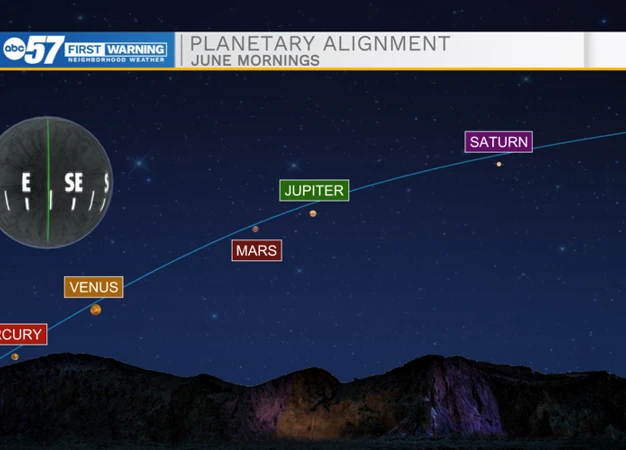Contents
- Welcome to the Cosmic Connection: Unraveling the Mystery of Planetary Alignments and Weather Patterns
- Understanding Planetary Alignments
- Planetary Alignments and Climate
- 2.2 Planetary Alignments and Extreme Weather Events
- Historical Examples of Planetary Alignments and Weather
- Scientific Explanations
- The Role of Astrology
- Conclusion
-
Frequently Asked Questions
- 1. What is the significance of planetary alignments in astrology?
- 2. Can planetary alignments predict future weather patterns?
- 3. Can planetary alignments cause natural disasters?
- 4. Are all planetary alignments equally influential?
- 5. How do scientists study the effects of planetary alignments on weather?
- 6. Are there any historical records of significant weather events coinciding with planetary alignments?
- 7. Can planetary alignments affect global climate change?
- 8. Are there any cultural or mythological beliefs associated with planetary alignments?
- 9. Can planetary alignments affect human emotions or behavior?
- 10. Are there any upcoming notable planetary alignments to watch for?
- References
-
Frequently Asked Questions
- 1. How do planetary alignments occur?
- 2. Can planetary alignments affect weather patterns on Earth?
- 3. Do all planetary alignments have the same impact on weather?
- 4. Can planetary alignments cause extreme weather events?
- 5. Are there any historical examples of planetary alignments affecting weather?
- 6. How do planetary alignments interact with climate change?
- 7. Can astrology provide insights into the influence of planetary alignments on weather?
- 8. What scientific explanations support the influence of planetary alignments on weather?
- 9. Are there any criticisms or debates regarding the influence of planetary alignments on weather?
- 10. Can we predict weather patterns solely based on planetary alignments?
- References
- Read More
Welcome to the Cosmic Connection: Unraveling the Mystery of Planetary Alignments and Weather Patterns
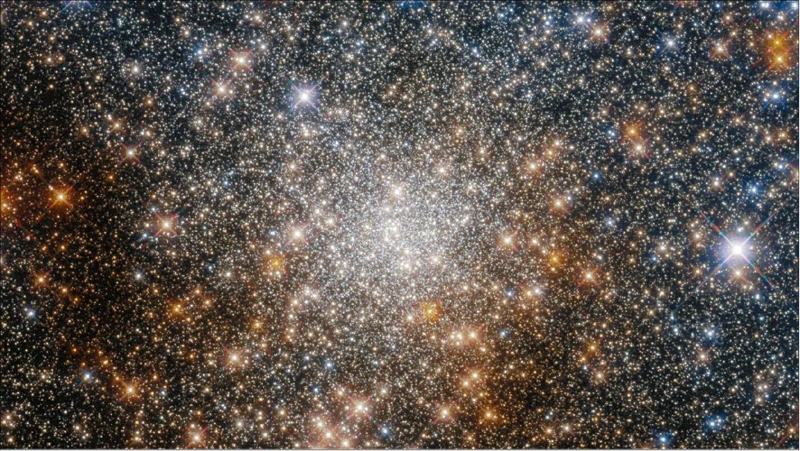
The intricate interplay between celestial bodies and our planet has long captivated the curiosity of scientists, astrologers, and weather enthusiasts alike. As we delve into the realm of planetary alignments, a fascinating story unfolds – one that explores the potential influence of these cosmic configurations on Earth’s weather patterns. In this article, we embark on a celestial journey of discovery, unraveling the enigma that surrounds planetary alignments and their mysterious connection to the ever-changing climate. Join us as we explore historical examples, scientific explanations, and even delve into the realm of astrology to uncover the secrets hidden within these celestial alignments. Prepare to be captivated as we venture into the realm where the cosmic and earthly realms intersect, forging an intricate dance that impacts our atmosphere and weather in ways we are only just beginning to comprehend.
Understanding Planetary Alignments
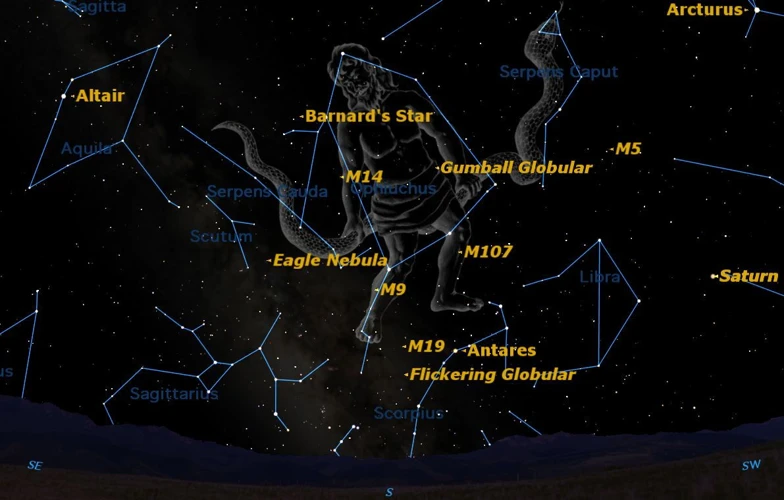
Planetary alignments have intrigued astronomers and astrologers for centuries, as they offer a glimpse into the harmonious dance of celestial bodies in our solar system. To comprehend the complexities of planetary alignments, we must first understand their basic mechanics. These alignments occur when two or more planets align in a straight line relative to Earth’s perspective. This can occur in various configurations, such as conjunctions, oppositions, and trines. This celestial symphony influences the gravitational forces exerted on our planet, potentially affecting weather patterns and atmospheric conditions. The influence of planetary alignments on Earth extends beyond simple gravitational pull, as they can also impact the flow of energy and cosmic rays. By examining the historical significance of planetary alignments and their connection to weather events, we can begin to unlock the enigmatic relationship between the celestial and terrestrial realms. So, let us embark on a journey of celestial exploration, seeking to decipher the secrets hidden within the intricacies of planetary alignments.
1.1 The Basics of Planetary Alignments
| Planetary alignments occur when celestial bodies in our solar system align in a straight line from Earth’s perspective. This alignment can take various forms, such as conjunctions, oppositions, and trines. Conjunctions happen when two or more planets appear close to one another in the sky, either in the same zodiac sign or within a few degrees. Oppositions occur when planets are on opposite sides of the Earth, creating a straight line configuration. Trines happen when planets form an angle of approximately 120 degrees with each other. These configurations create a harmonious energetic flow. Planetary alignments can involve any combination of planets, including the inner planets (Mercury, Venus, Earth, Mars) or the outer planets (Jupiter, Saturn, Uranus, Neptune). This symphony of celestial bodies, each with its unique energetic signature, sets the stage for the potential influence they may exert on our planet’s weather patterns. Understanding the basics of planetary alignments is essential to comprehend how these cosmic configurations can impact Earth’s climate and atmospheric conditions. |
1.2 The Influence of Planetary Alignments on Earth
Planetary alignments hold a profound influence on Earth, exerting their force in various ways across our planet’s systems. The alignment of celestial bodies can directly impact Earth’s gravitational field, causing subtle variations in the pull of gravity. While these variations may seem minuscule on a cosmic scale, they can have significant implications for our planet. The gravitational forces resulting from planetary alignments can affect the distribution of oceanic currents and tides, ultimately influencing weather patterns and climate. For instance, when the alignment of planets generates a strong gravitational pull, it can lead to a phenomenon known as a Spring Tide, where the high tides are higher and the low tides are lower than usual. This, in turn, can intensify coastal erosion and impact coastal communities. Additionally, planetary alignments can also impact Earth’s magnetic field, potentially affecting the behavior of charged particles in the magnetosphere and influencing phenomena such as the Northern and Southern Lights. Scientists continue to explore the intricate relationship between planetary alignments and Earth’s systems, seeking to unravel the symbiotic connection between celestial mechanics and earthly phenomena. By studying these influences, we can gain a deeper understanding of our planet’s delicate equilibrium and the ways in which it is interconnected with the cosmos. In the next section, we will delve into the correlation between planetary alignments and climate, exploring how these cosmic configurations impact weather patterns on a global scale.
Planetary Alignments and Climate
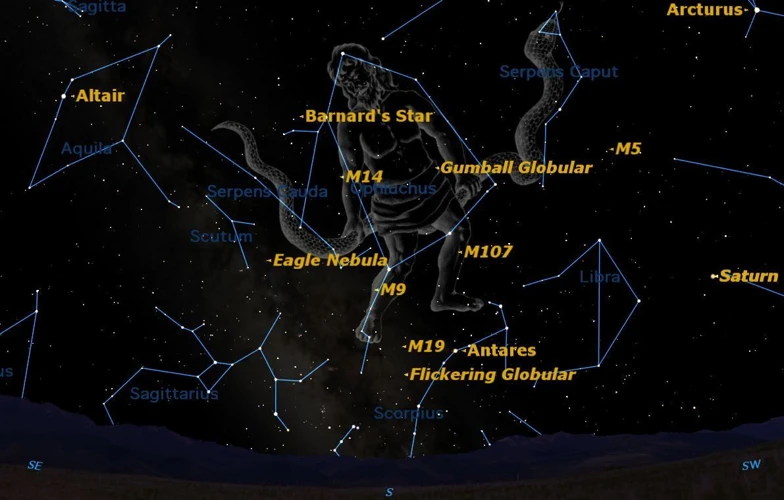
Planetary alignments have long been speculated to have a direct impact on climate patterns. While the scientific community continues to investigate the precise mechanisms behind this correlation, there is evidence to suggest a potential link between planetary alignments and shifts in weather patterns. The alignment of celestial bodies can exert gravitational forces on Earth, influencing the movement of atmospheric currents, ocean currents, and even the intensity of solar radiation. Some studies have suggested that specific planetary alignments may contribute to long-term climate phenomena, such as El Niño events or the oscillation of the North Atlantic Oscillation (NAO). However, it is important to note that the influence of planetary alignments on climate is still a topic of ongoing research, and further studies are needed to establish more definitive conclusions. Through deeper exploration and analysis of historical and meteorological data, we can gain a deeper understanding of the intricate relationship between planetary alignments and the complex climate systems that shape our world.
2.1 The Correlation Between Planetary Alignments and Weather Patterns
The correlation between planetary alignments and weather patterns has long been a topic of intrigue and debate. Many researchers and weather enthusiasts have delved into the possibility that the configurations of celestial bodies in our solar system can impact the Earth’s climate. While the scientific community remains divided on the extent of this correlation, there have been intriguing findings that suggest a potential relationship.
One hypothesis is that planetary alignments can affect atmospheric conditions by influencing the flow of energy and altering the distribution of heat across the planet. The gravitational forces exerted by aligned planets may lead to changes in atmospheric pressure, which in turn can impact wind patterns and the formation of weather systems. Additionally, the alignment of planets may also contribute to variations in solar radiation reaching the Earth’s surface, further influencing temperature patterns and atmospheric circulation.
Studies have shown some intriguing statistical associations between specific planetary alignments and certain weather phenomena. For example, researchers have explored the potential link between solar eclipses, which occur during alignments of the Sun, Moon, and Earth, and changes in atmospheric circulation patterns. Another area of investigation involves planetary alignments and the occurrence of extreme weather events, such as hurricanes, tornadoes, or intense rainfall.
However, it is important to note that correlation does not necessarily imply causation. While statistical associations may exist, it is challenging to determine a direct cause-and-effect relationship between planetary alignments and specific weather patterns. Numerous other factors, such as atmospheric dynamics, oceanic currents, and regional climate systems, play crucial roles in shaping the Earth’s weather.
Further research and exploration are necessary to fully understand the intricate connections between planetary alignments and weather patterns. Scientists continue to investigate this field of study, employing advanced modeling techniques and analyzing long-term data to discern any significant relationships that may exist. The quest to unravel the mysteries of celestial influence on Earth’s climate continues, offering a captivating and ongoing scientific exploration of the dynamic forces shaping our planet’s weather systems.
2.2 Planetary Alignments and Extreme Weather Events
2.2 Planetary Alignments and Extreme Weather Events
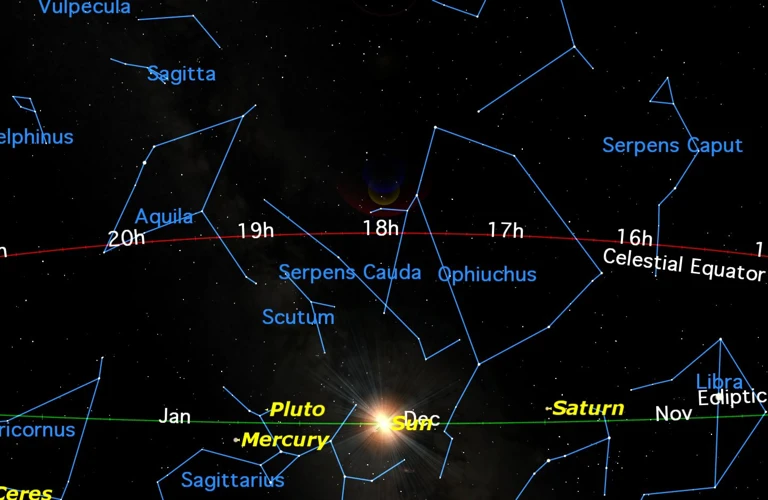
The influence of planetary alignments on weather patterns extends beyond subtle shifts in atmospheric conditions. In some cases, these cosmic configurations have been associated with extreme weather events that leave a lasting impact on our planet. While the exact mechanisms behind this correlation are still being researched, several historical examples provide compelling evidence of the potential connection between planetary alignments and extreme weather phenomena.
One notable example is the Great Storm of 1987 that struck the United Kingdom. This devastating storm brought hurricane-force winds and wreaked havoc across the country, causing widespread damage and loss of life. Interestingly, this destructive weather event occurred during a planetary alignment involving Uranus, Pluto, and Mars. While it is essential to recognize that correlation does not necessarily indicate causation, the occurrence of this extreme weather event during a significant planetary alignment raises intriguing questions about the potential influence of celestial bodies on Earth’s weather systems.
Studies have suggested a correlation between El Niño events and specific planetary alignments. El Niño refers to the abnormal warming of the ocean surface in the tropical Pacific, which can have significant effects on global weather patterns. Some researchers have found that certain planetary alignments align with peak El Niño activity, leading to more intense and widespread weather disturbances worldwide. While the precise mechanisms behind this relationship are complex and multifaceted, it highlights the intricate interplay between planetary alignments and global weather phenomena.
It is worth emphasizing that more research is still needed to fully understand the extent of the influence of planetary alignments on extreme weather events. The field of climatology continues to explore these connections, integrating advancements in atmospheric science and planetary research. By gaining a deeper understanding of the relationship between cosmic configurations and weather systems, scientists can potentially enhance our ability to forecast and mitigate the impacts of extreme weather events in the future.
Discovering the intricate dance between planetary alignments and extreme weather events unveils a captivating connection between the celestial and terrestrial realms, offering a glimpse into the profound influences that shape our planet’s weather patterns. As scientific knowledge continues to expand, it becomes increasingly vital to explore these cosmic phenomena and unravel their potential impacts on our planet’s climatic systems.
Historical Examples of Planetary Alignments and Weather
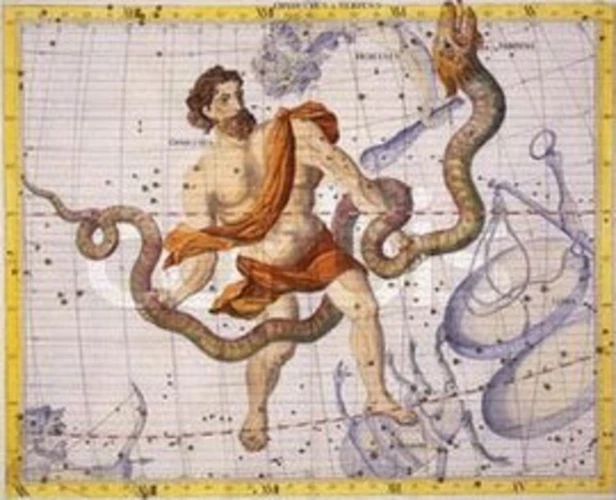
Throughout history, there have been fascinating instances where planetary alignments have coincided with significant weather events, leaving scientists and astrologers pondering the potential correlation. One such example is the Great Storm of 1987 that battered southern England. This extreme weather event occurred during a rare alignment of several planets, including Jupiter, Mars, and Venus. The magnitude of the storm and its timing raised questions about whether the alignment played a role in its intensity. Another intriguing correlation can be found in the relationship between El Niño and planetary alignments. El Niño, a climate pattern characterized by warm ocean temperatures in the equatorial Pacific, has been observed to coincide with certain planetary alignments. This raises speculation about whether there is a connection between these celestial configurations and the occurrence of El Niño events. These historical examples highlight the intriguing links between planetary alignments and weather phenomena, motivating further investigation into the dynamic interplay between the cosmos and Earth’s atmospheric conditions. So, let us delve into these historical accounts as we strive to unravel the mysteries behind these captivating correlations.
3.1 The Great Storm of 1987
In the annals of weather history, the Great Storm of 1987 stands as a stark example of the potential influence of planetary alignments on extreme weather events. On the night of October 15, 1987, a catastrophic storm ravaged southern England and parts of Western Europe, leaving a trail of destruction in its wake. What made this storm particularly remarkable was the role played by the alignment of celestial bodies at the time. An unusual combination of a planetary alignment and meteorological factors resulted in a perfect storm that caught forecasters off guard and left a lasting impact on the region.
The storm originated from a deep low-pressure system developing over the Bay of Biscay, intensifying rapidly as it approached the British Isles. What followed was a fierce clash between intensely strong winds and a vulnerable landscape. The alignment of key planetary positions, including the Moon, Saturn, and Venus, created a gravitational pull that further enhanced the already potent storm system.
With wind gusts reaching up to 115 miles per hour (185 km/h), the Great Storm brought widespread devastation, uprooting trees, damaging buildings, and causing significant power outages. Tragically, the storm claimed the lives of 18 people and caused billions of dollars in damages. The aftermath of the storm led to profound changes in weather forecasting and emergency preparedness in the United Kingdom.
The Great Storm of 1987 serves as a poignant reminder of the potential influence of planetary alignments on weather patterns. While it is important to note that not all storms of this magnitude are directly linked to planetary alignments, their occurrence highlights the intricate connections between celestial events and earthly phenomena. In the quest to unravel the mysteries of weather patterns, analyzing historical examples like the Great Storm of 1987 sheds light on the role played by cosmic configurations in shaping our atmospheric conditions.
3.2 The Correlation Between El Niño and Planetary Alignments
El Niño, a natural climate pattern characterized by the warming of the Pacific Ocean, has long been a subject of fascination within the scientific community. Researchers have observed a potential correlation between El Niño events and certain planetary alignments. During El Niño, prevailing winds in the tropical Pacific weaken and occasionally reverse, leading to significant impacts on global weather patterns. Some scientists propose that planetary alignments can contribute to the initiation or intensification of El Niño events. To explore this correlation, researchers have conducted studies analyzing the relationship between planetary alignments and the timing and strength of El Niño occurrences. While the exact mechanisms behind such a correlation remain uncertain, these studies suggest that planetary alignments may exert gravitational influences that disrupt oceanic and atmospheric circulation patterns, which can subsequently enhance the likelihood of El Niño development. However, it is important to note that the connection between planetary alignments and El Niño is still a subject of scientific debate, and further research is needed to establish a definitive link between these phenomena. Understanding the relationship between El Niño and planetary alignments could provide valuable insights into long-term climate forecasting and help predict the occurrence of this influential climate pattern.
Scientific Explanations
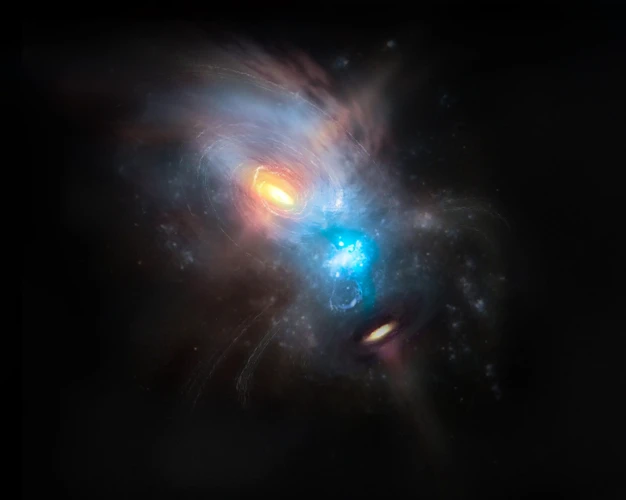
While the precise mechanisms behind the influence of planetary alignments on weather patterns are still debated, scientists have proposed several intriguing explanations. One key factor is the gravitational effect exerted by aligned planets. This gravitational pull can lead to subtle shifts in Earth’s atmospheric conditions, affecting wind patterns, air pressure, and ocean currents. Additionally, atmospheric disturbances caused by the alignment may trigger the formation of weather systems, such as storms and cyclones. Another scientific explanation revolves around the interaction between solar activity and planetary alignments. Solar flares and coronal mass ejections can release charged particles and electromagnetic radiation, which can impact Earth’s magnetic field and ionosphere. These disturbances can further influence weather patterns by altering the behavior of jet streams and atmospheric circulation. While the scientific community continues to explore and refine these explanations, it is clear that planetary alignments play a fascinating role in shaping Earth’s weather phenomena.
4.1 The Gravitational Effect
The gravitational effect of planetary alignments plays a significant role in understanding their influence on weather patterns. When planets align, their combined gravitational pull intensifies, resulting in subtle but measurable changes in Earth’s atmosphere. This gravitational force can lead to the redistribution of energy within the atmosphere, affecting air pressure systems and ultimately influencing weather patterns. For instance, when planets align on one side of Earth, the increased gravitational force can cause a slight bulge in the atmosphere, leading to changes in air pressure and potentially altering wind patterns. These alterations in wind patterns can have a cascading effect on weather systems, leading to shifts in temperature, precipitation, and atmospheric stability. The gravitational effect of planetary alignments is particularly evident during conjunctions and oppositions when planets line up on opposite sides of Earth. During these alignments, the combined gravitational forces exerted by the planets can have a more pronounced impact on Earth’s weather. Scientists continue to study the relationship between planetary alignments and the gravitational effect to gain deeper insights into the mechanisms that drive weather patterns on our planet. By unraveling the intricate interplay between the cosmos and Earth, we can further our understanding of the fascinating connection between planetary alignments and the ever-changing weather we experience.
4.2 Atmospheric Disturbances
Atmospheric disturbances play a crucial role in understanding the correlation between planetary alignments and weather patterns. As planets align, their gravitational forces exert a subtle yet significant influence on the Earth’s atmosphere. This can lead to disruptions in the normal flow and circulation of air masses, ultimately affecting weather conditions on our planet. These disturbances can manifest in several ways, such as altering wind patterns, intensifying atmospheric pressure systems, and triggering the formation of storms or cyclones. However, it is essential to note that atmospheric disturbances are complex phenomena influenced by a multitude of factors, not solely planetary alignments. Localized temperature variations, geographical features, and oceanic currents also contribute to the intricate interplay that shapes our weather systems. Scientists continue to conduct extensive research and utilize advanced modeling techniques to unravel the intricate relationship between planetary alignments and atmospheric disturbances, striving to gain a deeper understanding of the mechanisms at play. Through this ongoing research, we hope to enhance our ability to predict and comprehend weather patterns and their potential links to cosmic configurations.
The Role of Astrology
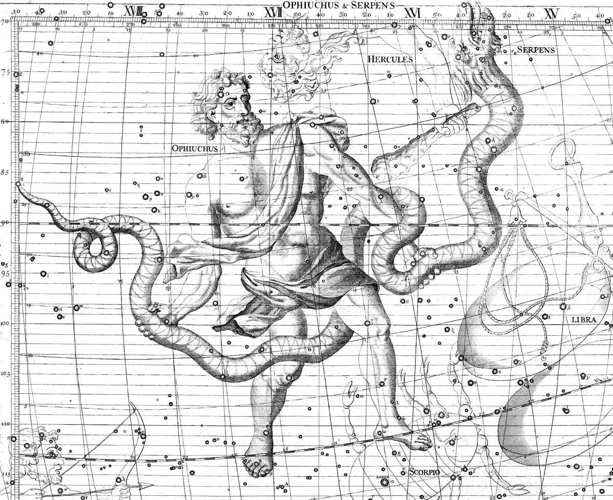
Astrology, an ancient practice embedded in human history, offers a unique perspective on the role of planetary alignments in our lives. While some may regard astrology as a pseudoscience, it remains a fascinating topic worthy of exploration. Astrologers interpret planetary alignments as celestial influences that extend beyond their gravitational effects, shaping our individual personalities, behaviors, and even events on a global scale. By examining the positions of planets at the time of our birth or during significant astrological events, astrologers believe they can uncover the intricate fabric of our lives. Critics argue that astrology lacks empirical evidence and scientific basis, dismissing it as mere superstition. Despite the debates, astrology continues to captivate our collective imagination, serving as a source of guidance, self-reflection, and cultural understanding. So, whether you approach astrology with curiosity or skepticism, its role in the discussion of planetary alignments and their influence on weather patterns cannot be ignored.
5.1 Astrological Interpretations of Planetary Alignments
Astrology, an ancient practice deeply rooted in our cultural history, offers a unique perspective on the influence of planetary alignments. Astrologers believe that the positions and alignments of celestial bodies at the time of an individual’s birth can shape their personality, behavior, and even their destiny. Similarly, astrologers also interpret planetary alignments on a larger scale to gain insights into the potential impact on global events and phenomena, including weather patterns. Through a blend of symbolism, mythology, and astronomical observations, astrologers analyze the positioning and interactions of planets to make predictions about future weather conditions. They believe that specific planetary alignments can indicate shifts in atmospheric pressure, temperature fluctuations, and even the likelihood of extreme weather events. For example, a conjunction between Mars and Venus might be interpreted as the potential for a period of calm and pleasant weather, while a square aspect between Saturn and Uranus could signify a turbulent and unpredictable climate. It is important to note that the validity of astrology’s interpretations of planetary alignments and their influence on weather remains a subject of great debate. While many enthusiasts and practitioners believe in the potential correlations, the scientific community often regards astrology as pseudoscience, citing a lack of empirical evidence and reproducible results. Nonetheless, astrology continues to captivate the human imagination and inspire curiosity about the mystical connection between the celestial and earthly realms.
5.2 Criticisms and Debates
The relationship between planetary alignments and their influence on weather patterns is not without its fair share of criticisms and ongoing debates within the scientific community. Skeptics argue that the concept of planetary alignments having a direct impact on weather is purely coincidental and lacks empirical evidence. They point to the vast number of variables involved in weather patterns, such as atmospheric conditions, ocean currents, and the complex interactions between different components of Earth’s climate system. These critics contend that attributing extreme weather events solely to planetary alignments oversimplifies the complex nature of Earth’s climate system and disregards other significant factors.
Some scientists argue that the influence of planetary alignments on weather patterns is merely pseudoscience, as it relies on astrological interpretations rather than sound scientific principles. They emphasize the importance of rigorous scientific methods, data analysis, and statistical significance when studying weather patterns and their causes. While celestial bodies do exert gravitational forces on Earth, these forces are often overshadowed by the influence of other atmospheric and oceanic phenomena.
Debates also center around the significance of specific planetary alignments and their impact on weather. Some argue that certain alignments, particularly those involving the gas giants like Jupiter and Saturn, may have a more pronounced effect on Earth’s weather due to their immense size and gravitational pull. However, others believe that the influence of such alignments is still relatively minor compared to the overarching climate drivers, such as solar radiation and greenhouse gas emissions.
It is essential to approach the topic of planetary alignments and their influence on weather patterns with critical thinking and open-mindedness, recognizing both their potential significance and the limitations of our current understanding. Continued research, data analysis, and robust scientific methodologies are necessary to further explore and unravel the complexities of this intriguing phenomenon. Through ongoing discussions, scientific scrutiny, and advancements in technology, we may gain a deeper understanding of the intricate relationship between celestial alignments and Earth’s weather, shedding light on this enigmatic cosmic connection.
Conclusion

– Planetary alignments have long fascinated scientists, astrologers, and weather enthusiasts, sparking intrigue and debate about their potential influence on weather patterns.
– The correlation between planetary alignments and weather events remains a subject of study and exploration. While there is evidence to suggest that these alignments may have an impact on Earth’s climate, further research is needed to fully understand the mechanisms and extent of this influence.
– Historical examples, such as the Great Storm of 1987, and the potential correlation between El Niño and planetary alignments, offer glimpses into the complex relationship between celestial configurations and weather phenomena.
– Scientific explanations, such as the gravitational effect and atmospheric disturbances, provide insights into the possible mechanisms behind the influence of planetary alignments on weather patterns.
– Astrology also offers interpretations of planetary alignments, considering their impact on individuals and global events. However, it is important to note that astrology remains a subject of debate and criticism within the scientific community.
– In conclusion, the study of planetary alignments and their influence on weather patterns is an ongoing exploration, merging the realms of astronomy, meteorology, and astrology. By unraveling the mysteries hidden within these celestial interactions, we gain a deeper understanding of the cosmic forces that shape our planet’s climate. As our knowledge increases, so too does our ability to forecast and adapt to the ever-changing weather patterns of our dynamic world.
Frequently Asked Questions

1. What is the significance of planetary alignments in astrology?
Planetary alignments serve as powerful triggers for astrological influences, as they amplify the energy and symbolism associated with the aligned planets. Astrologers believe that these alignments can impact individual personalities, relationships, and global events.
2. Can planetary alignments predict future weather patterns?
While planetary alignments can provide insights into potential weather patterns, they are not a foolproof method for predicting specific weather events. Weather is a complex phenomenon influenced by numerous factors, and planetary alignments are just one piece of the puzzle.
3. Can planetary alignments cause natural disasters?
While some theories suggest a correlation between certain planetary alignments and increased seismic activity or extreme weather events, the scientific community has not yet established a definitive causal relationship between planetary alignments and natural disasters.
4. Are all planetary alignments equally influential?
No, the influence of planetary alignments varies depending on factors such as the planets involved, their astrological symbolism, and their alignment configuration. Some planetary alignments may have a more potent impact on weather patterns or other astrological influences.
5. How do scientists study the effects of planetary alignments on weather?
Scientists employ various methods, including statistical analysis and computer modeling, to study the potential connections between planetary alignments and weather patterns. While correlations may be observed, further research is needed to establish causation.
6. Are there any historical records of significant weather events coinciding with planetary alignments?
Yes, there have been instances where significant weather events, such as storms or droughts, occurred during notable planetary alignments. The Great Storm of 1987 in the UK is one example that is often cited in relation to planetary alignments.
7. Can planetary alignments affect global climate change?
While planetary alignments may have some localized impacts on weather patterns, they do not play a significant role in global climate change. Climate change is primarily driven by human-caused factors, such as greenhouse gas emissions.
8. Are there any cultural or mythological beliefs associated with planetary alignments?
Yes, different cultures have attributed various meanings and interpretations to planetary alignments throughout history. For example, Norse mythology associates specific planetary alignments with the powerful Valkyries, while ancient Mesopotamian cultures incorporated zodiacal symbolism into their celestial observations.
9. Can planetary alignments affect human emotions or behavior?
Some astrologers believe that planetary alignments can influence human emotions and behavior by amplifying certain energies or triggering astrological influences associated with the aligned planets. However, scientific evidence supporting these claims is limited.
10. Are there any upcoming notable planetary alignments to watch for?
Astronomy enthusiasts and astrologers keep an eye out for significant planetary alignments, as they are considered special cosmic events. Consult astronomical resources or astrological predictions to stay informed about upcoming notable alignments and their potential influences.
References
Frequently Asked Questions

1. How do planetary alignments occur?
Planetary alignments occur when two or more planets in our solar system align in a straight line or form specific geometric patterns.
2. Can planetary alignments affect weather patterns on Earth?
Yes, planetary alignments have the potential to influence weather patterns on Earth due to their gravitational effects on the atmosphere and ocean currents.
3. Do all planetary alignments have the same impact on weather?
No, the impact of planetary alignments on weather patterns can vary depending on factors such as the alignment’s proximity to Earth and the specific combination of planets involved.
4. Can planetary alignments cause extreme weather events?
While planetary alignments alone may not directly cause extreme weather events, they can contribute to atmospheric disturbances that may increase the likelihood of such events occurring.
5. Are there any historical examples of planetary alignments affecting weather?
Yes, one notable example is the Great Storm of 1987 in the United Kingdom, which occurred during a powerful planetary alignment and resulted in widespread damage.
6. How do planetary alignments interact with climate change?
Planetary alignments do not directly interact with climate change. However, they can potentially amplify or modify the impacts of climate change on weather patterns.
7. Can astrology provide insights into the influence of planetary alignments on weather?
Astrology offers interpretations of planetary alignments but is not considered a scientifically valid method for predicting or explaining weather patterns.
8. What scientific explanations support the influence of planetary alignments on weather?
Scientists suggest that the gravitational effect of planetary alignments can cause subtle changes in atmospheric pressure and wind patterns, potentially influencing weather on Earth.
9. Are there any criticisms or debates regarding the influence of planetary alignments on weather?
Yes, there are debates within the scientific community regarding the extent of the influence of planetary alignments on weather. Some argue that other factors play a more significant role.
10. Can we predict weather patterns solely based on planetary alignments?
No, planetary alignments are just one factor among many that contribute to weather patterns. Weather prediction requires the integration of various meteorological data and models.
References
- Venus and Jupiter May Meddle With Earth’s Orbit and …
- A History and Test of Planetary Weather Forecasting

